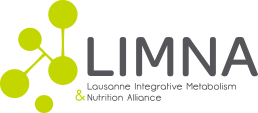Associate Physician, PD, MER
Diana Ballhausen
Center for Molecular Diseases (CMM) - CHUV Towards the understanding of neuropathogenesis in organic acidurias
Methylmalonic aciduria (MMAuria; methylmalonyl-CoA-mutase deficiency), and glutaric aciduria type I (GA-I; glutaryl-CoA dehydrogenase deficiency) are inborn errors of metabolism presenting during the first years of life with cerebral dysfunction caused by metabolic self-intoxication. While both diseases have been known for more than 40 years, existing therapies aimed at metabolic correction (ranging from dietary therapy to liver transplantation) are unable to prevent progressive cerebral damage and irreversible handicap, even in presymptomatically treated patients diagnosed by newborn screening. Understanding the mechanisms of cerebral dysfunction is crucial for the development of more efficient neuroprotective treatments, aiming at preventing neurological handicap.
We recently showed that brain damage is not only the consequence of a systemic metabolic derangement, but can also result from autonomous production of toxic metabolites in the central nervous system, trapped in the brain due to limited efflux across the blood-brain barrier. Using 3D reaggregated brain cell cultures derived from wild type embryonic rats and exposing them to different single metabolites known to accumulate in these diseases, we identified the most toxic metabolite in each disorder. Surprisingly, we uncovered significant ammonium accumulation after exposure to these metabolites. Ammonium is a well-known neurotoxin and its involvement in the neuropathophysiology of both disorders is a potential target for new treatment strategies. We further found evidence that neurons are probably secondarily suffering, showing disturbed post-translational modifications and assembly of neurofilaments.
In the present project we have switched our in vitro model to cells derived from knock out (KO) mice for each disease, in order to be closer to in vivo conditions. The histological, biochemical, gene expression and metabolomic profile characterization of the models will give us further insights into the mechanisms involved in the neuropathogenesis. Results will be validated in vivo and neuroprotective treatments will be tested first in vitro and further developed in KO mice.
Besides the potential direct impact on the management of affected patients, this project also addresses aspects of brain physiology, namely, the metabolic subspecialization of brain cell types, their spatial integration and cooperation to allow for metabolic fluxes. Our approach will enable us to better understand pathophysiological processes involved in these diseases and to develop new neuroprotective strategies.
Keywords
- inborn errors of metabolism
- organic acidurias
- methylmalonic aciduria
- glutaric aciduria
- neuropathophysiology
- neuroprotection
- methylcitric acid
- 3-OH-glutaric acid
Contact
Dr Diana Ballhausen, PD, MER
Médecin associé
Centre des Maladies Moléculaires (CMM)
CHUV-CI 02/32
CH-1011 Lausanne
Switzerland
tél.: +41 21 314 34 82
E-mail
Lab website
![]() https://orcid.org/0000-0003-2940-3439
https://orcid.org/0000-0003-2940-3439

